During a recent Masterclass with some of my students, we were faced with an situation quite typical of a working pro: several hours of nothing much going on, half an hour of madness, and a bit of a post-mortem afterwards. The main feeling I got from the group was best described as a sort of mild panic: after being lulled into a state of half-hearted inactivity by uninspiring light and a fairly pedestrian subject, we were suddenly handed great light, rapidly changing conditions and the same pedestrian subjects come alive. This is by no means a unique situation, and sometimes the situation is a one-off and professionally critical. So what’s the best way to maximise photographic returns?
I actually think the biggest mistake here is to feel like you have to force yourself to make or find an image in every situation. Sometimes, there just isn’t a worthwhile photograph to be had – a single subject element or a bit more light can make all the difference. At times like this, I’ll do one of two things: experiment knowing that I’m going to delete most of the results afterwards, or play the ‘what if’ game. I will do my best to stick to my guns commitment-wise, though: if I say I’m going to give myself 2-3 hours, I’ll stay there for the whole time. It’s a bit different on assignment, of course: you stay on station til you get an image the client is happy with, unless there is really no chance of getting anything (e.g. the sun setting, and the expected event being during the daytime) – at which point you must re-plan and revaluate. During the waiting time on an assignment, I’ll be both experimenting and doing what I think of as ‘banking insurance’ – you get an image that’s slightly closer than the last one to the ideal best case scenario, just in case.
The purpose of experimentation is twofold: firstly, you build familiarity with a given photographic situation or set of parameters and the range of outcomes you can expect. It can be something as simple as figuring out what shutter speeds give the aesthetics you desire for a given wave height and speed, or how much ND to use to erase people – or render them as flowing. (It could also be messing around with your lighting setup waiting for a product to be delivered or the model to be ready). Secondly, and perhaps more importantly, it builds familiarity with your equipment: the last thing you want to be doing is fumbling with buttons or searching through menus for a setting. That can both take your eye of the action and produce a sense of panic that’s even more crippling than just trying to make the best of a suboptimal setup – speaking of which, sufficient experimentation should also prevent suboptimal setups from occurring at all.
Both outcomes are really subconscious training: the bigger the database of experience in your mind, the more likely it is you will be able to respond instinctively and semi-automatically in a rapidly changing situation to produce the results you want. If your subconscious brain is dealing with the mechanical execution, your conscious brain has more bandwidth left to consider the creative process or respond to change – and this is of course desirable. I suppose it’s one of the reasons it’s worth fiddling with your equipment at home (i.e. in a known, controlled environment to eliminate one variable) – but at the same time, it’s still necessary to actually go out and shoot under real situations to build in that familiarity. Simulations are certainly a proven part of pilot and sportsperson training* – I don’t see why it should be any different for photographers.
*Interestingly, in motorsport, the GT Academy has demonstrated that there really is a correlation between simulator skill and real world skill.
The ‘what if’ game (to be the subject of a future article) is a bit more interesting: it’s also simulation of a kind, though it requires the photographer to use their imagination and previsualizationn skills to consider what might make an ideal scenario. How many possible frames are there? What would the final output look like, stylistically and presentation-wise? What local adjustments might have to be done in post? If you find yourself in a situation where there is no possibility to make anything beyond a ‘craftsman**’ image, then ask yourself what additional elements could elevate that beyond – more directional light? An extra person? The person that’s there to look up? A bird or cloud to fill a bit of empty sky? The thing is, I’ve learned from experience that more often than not, if conditions are changing rapidly enough, chances are you’ll get your wish. One has to be both patient and prepared.
**i.e. competent but uninteresting
This brings us to the concept of prioritisation: a result of the what-if game is you should have some rough idea of both what different images are available, and under what circumstances they will come together. In a given situation, figure out which of those are most likely to yield the best result both aesthetically/creatively and technically – where will you get the strongest translation of idea? Focus on those and don’t get distracted by other passing opportunities. You may land up throwing away preparedness and missing capturing a very strong idea because of something fleeting through the corner of your eye. Realistically, it is highly unlikely you will capture that transient moment to your satisfaction – both because reaction and execution time are probably going to be longer than the event, and because your creative process is going to be almost 100% instinctual autopilot rather than careful consideration.
Obviously, when something is happening, or about to happen, start shooting. Bank the insurance. Whilst the pace is leisurely, check occasionally that the results are as expected – edges/composition/balance, exposure, focus etc. because when things really get going, you’re not going to have the chance to do this – or only at the expense of possibly missing the decisive moment. Try to get it right with the first image, but work on variants and alternatives if you have the time. Curate afterwards – that process does require consideration and objectivity – not something you’re likely to have in the heat of the moment. Only stop when you’re confident you have the image you want.
Leave the final selection to some time after the event. It’s too easy to either get emotionally invested in the moment and keep everything (not curate tightly enough) or feel despondent and as though you didn’t really capture the idea or mood you wanted. It’s probably in there somewhere, but you’re just not going to be able to see it at the present moment. (I would personally go back much later to see which of the images evoked a similar set of feelings as experienced about and at the event.)
The images illustrating this post were shot in about the space of an hour, and not presented in any particular order. There were far more, of course, but these are what survived my curation several weeks later; I do think they both capture the extraordinary sky that evening, some of the more standout individual elements and their interaction with the environment, and the general mood. Lastly, I’m sure I’ve said this countless times in the past, but there really is no substitute for practice – the more you shoot in general, the more of the shooting process can become muscle memory; the calmer you’ll be at prioritising and responding (and not forgetting to say lock your mirror up, or switch auto ISO) and the more objective you’ll be afterwards in the curation. And that in turn leads to the desired result: a unique image shot under unrepeatable conditions. MT
__________________
The Lisbon Masterclass (9-14 Mar 2016) is now open for booking
__________________
Ultraprints from this series are available on request here
__________________
Visit the Teaching Store to up your photographic game – including workshop and Photoshop Workflow videos and the customized Email School of Photography. You can also support the site by purchasing from B&H and Amazon – thanks!
We are also on Facebook and there is a curated reader Flickr pool.
Images and content copyright Ming Thein | mingthein.com 2012 onwards. All rights reserved
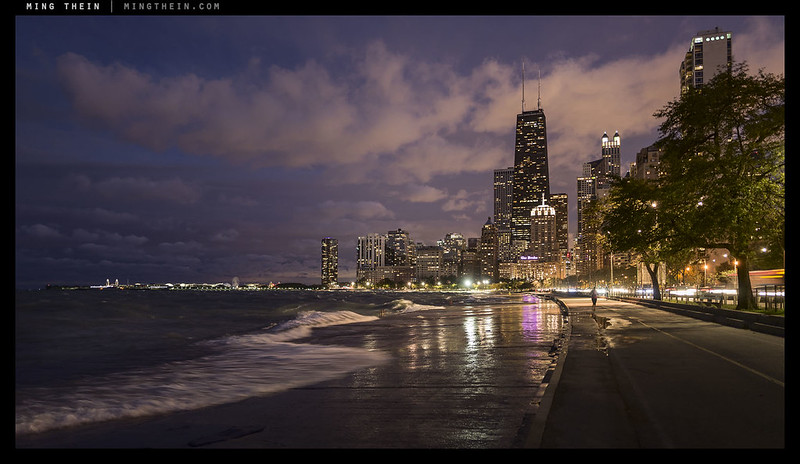
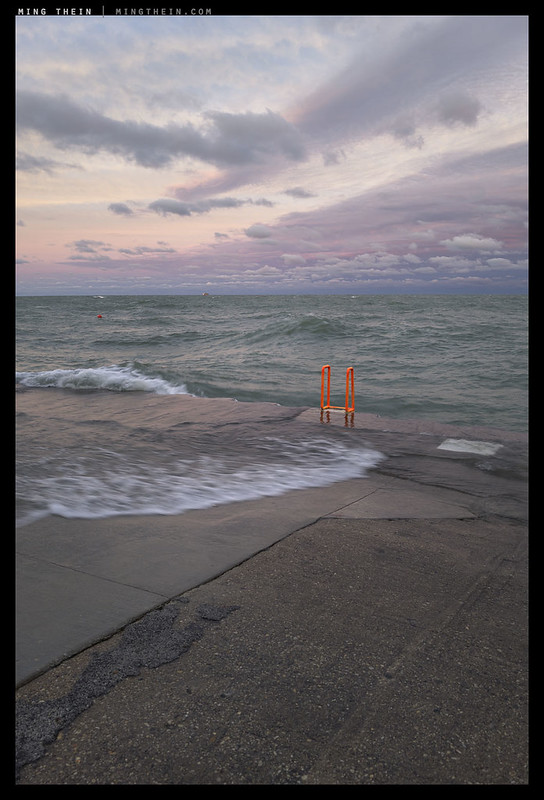
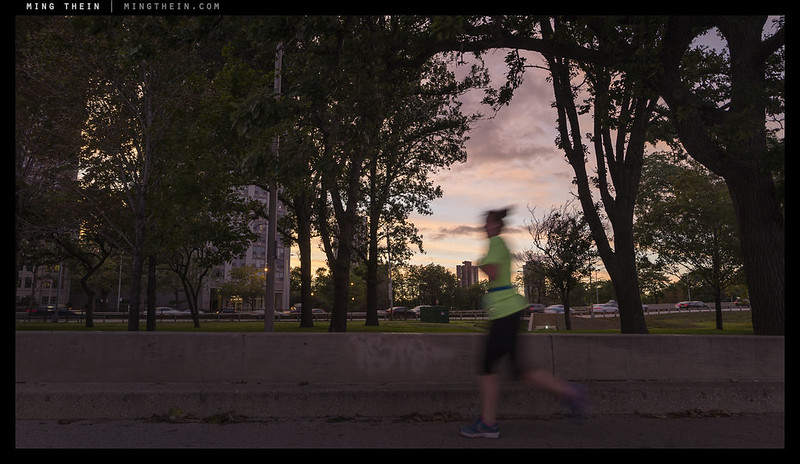
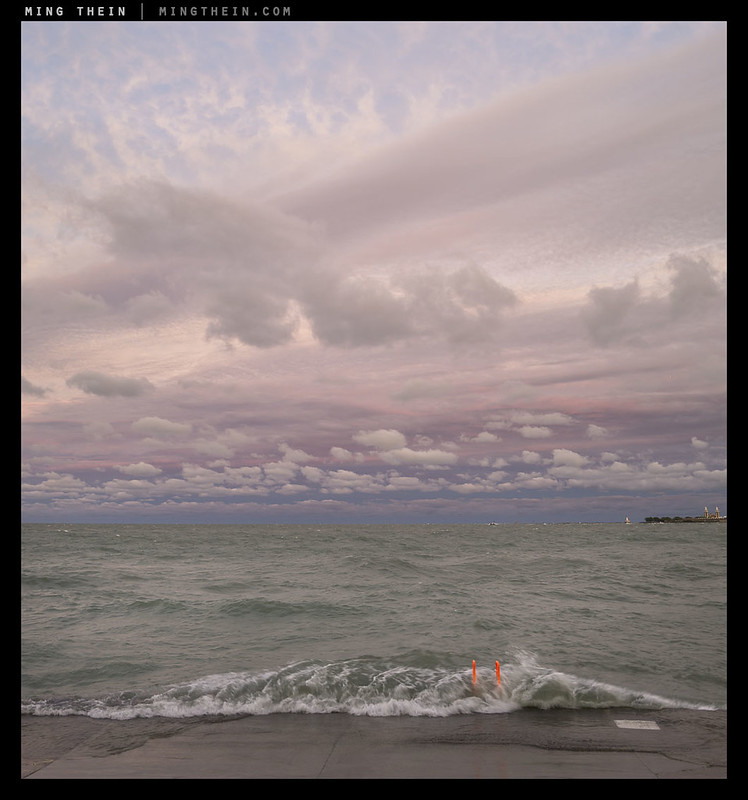
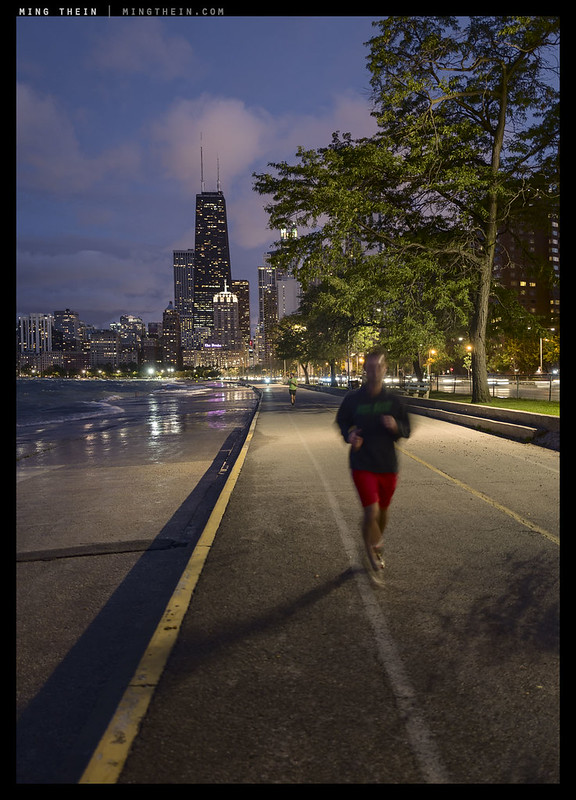
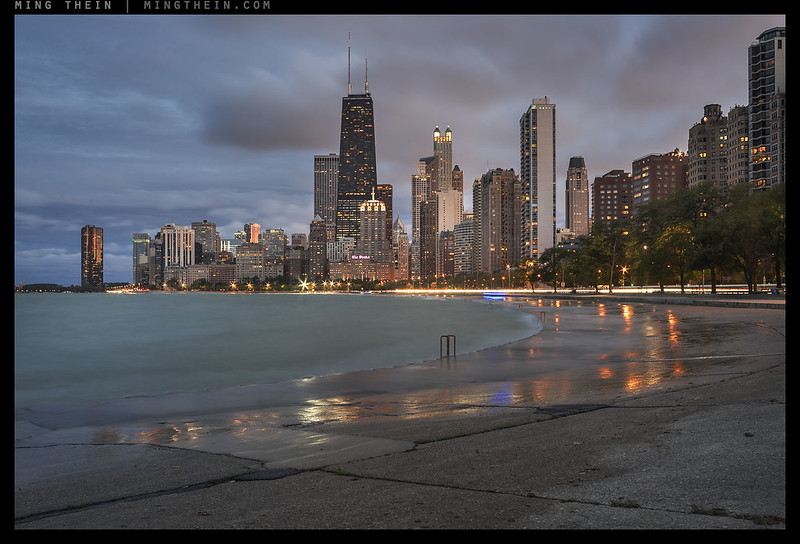

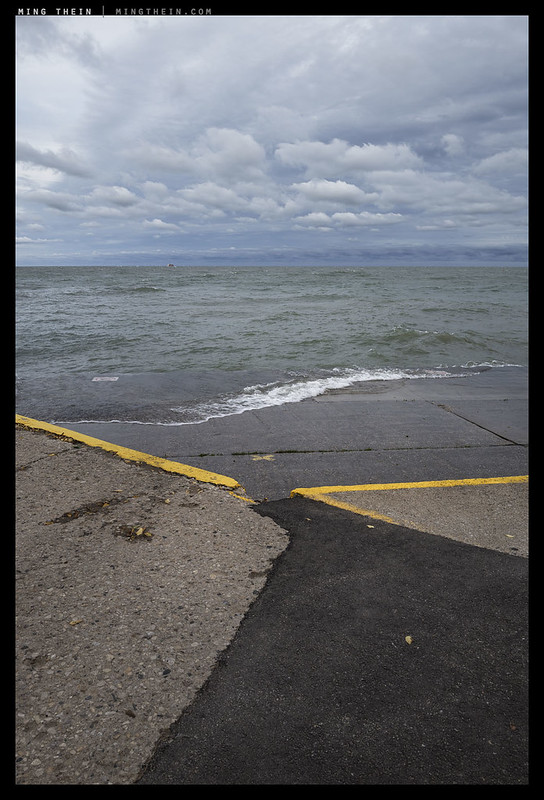
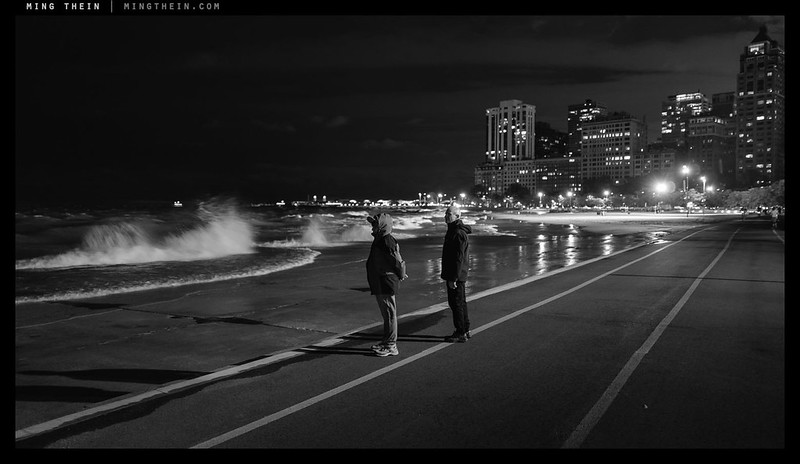





Absolutely wonderful article.
Thanks.
Very good posting! From experience I know that you practice what you preach and the results speak for themselves! Photography is a thinking person’s game! A thinker with a very curious eye!
Thanks Kath – we had a very similar experience when you and I went out for our session that morning at the Bean during sunrise 🙂
Hi Kath! 🙂
I was one of two students with Ming during this session, and perhaps readers might be interested on a student’s perspective on the same scene.
First, to reinforce Kath’s point, Ming definitely practices what be preaches! Besides being wet and cold followed by amazing light and sky, my strongest impression of that afternoon was seeing Ming work, seemingly impervious to the cold. I thought we’d never get home that night because Ming kept stopping or revisiting a scene as he found more and more compositions. I don’t think I’d ever seen someone work a scene that extensively before. The anxiety of infinite compositions is definitely a real thing! It was quite an eye-opening experience.
The first part of the afternoon was indeed a bit dire, but we were trying to work the scene for all it was worth. Personally, I was fascinated (and perhaps obsessed according to a certain photography teacher on the scene …) with the very different-looking waves on the lake, as I’m used to ocean waves, and trying unsuccessfully to capture them. We were definitely trying every angle we could think of, including some shoe-wetting locations. My fellow student Dan shot this photo of me trying to catch a wave:
I wasn’t too unhappy with the photo I got, as it captured the mood earlier in the afternoon, but I’m not sure it has what I had in mind:
(BTW, someone who’s done a great job capturing those waves is Dave Sandford whose wave pictures you can see on his Instagram: https://www.instagram.com/sandfordpix/ )
Anyway, all this to say that it was definitely an interesting afternoon, and the visual overload was real: I actually complained to Ming about it after the session. At some point when I couldn’t do anything useful with the great light we’d been lucky to receive, it was nice to just sit back and enjoy the amazing light, and not to beat myself up too much.
Hmm, the two photos didn’t display. Here are direct links in case anyone wants to look at them:
Sitting on the lake: https://www.flickr.com/photos/andreyew/24338135505/in/dateposted/
Results: https://www.flickr.com/photos/andreyew/21956192255/in/dateposted-public/
It’s only obsession when you don’t mind getting your feet and camera wet! 🙂 But trust me, I was cold – but at the same time, I know I can always be warm again, but you can never make the same photograph twice…
Waves are very difficult to photograph because the interesting ones usually happen under conditions where there isn’t quite enough light to freeze them, but at the same time the motion blur doesn’t always help, either.
Waves are also difficult because the perspective most of us get without being completely wet is mostly the same, so we dry people have to rely on other devices and techniques to depict the wave. Dave Sandford actually gets in the water and swims around in it to get his shots, I believe.
There may be some problems using a tripod there. :p
The best thing to do to prepare yourself for this is to do some ‘competition’ photography and use that mindset. I’m a commercial boat angler, and very often the fish only feed hard for an hour at a certain state of tide so I have to maximise my fishing time at that time. That means having everything prepared to minimise my downtime during the ‘hot’ period – a spare set of tackle rigged ready to go, spare hooks and lures out of their packets ready to go, toilet and eating done beforehand, landing net to hand, boxes ready to receive fish. End tackle is designed so a broken set can simply be unclipped and replaced instead of spending 10 minutes tying knots. Photographers can maximise their opportunities by streamlining their shooting workflow and adopting that ‘competition’ mindset – Fishermen know that ‘time and tide wait for no man’ – photographers should tweak it to ‘time, tide and sunlight wait for no man’ 🙂
Sounds about right – preparation and pre-visualisation (with a mental ‘shot list’) are the key. And don’t forget to ask ‘what if’ – stick around long enough and it usually happens 🙂
As for photographic competitions – be careful, it’s too easy to lose your image rights…
Really love the “Water, asphalt, yellow lines” image. Reminds me of of one Intook on Broadway NYC some five years ago. The water wasn’t there, but an abandoned Timberland shoe and some yellow and red lines were. The image has special meaning to me and hangs big on our living room wall. Not much wrong with a D700…
🙂
Great article.
Reminds me to look inside myself before, and during, my search for images.
Love the first one, number six and the last one.
Love your PP: Patient and Prepared. So true.
Classic article on a timeless subject; one for the hypothetical ‘best of’ book.
I encountered similar environmental/lighting conditions to this a while after you posted the set on Flickr, and found myself really craving a Q instead of the GR for the first time…
Thanks Todd. Resist the urge…
Definitely too much money for me, but I can see why you praised the Q’s shooting envelope in your review (and why you added the A7R Mark II to your arsenal): there’s a vibe to images like these – often handheld in marginal conditions – that makes me crave the versatility of IS. Now if they could just stick it in a GR-sized, GR-priced package…
The 7R2’s IS isn’t as good as you think – for critical sharpness, I find 1/FL (or slightly less) is about the limit for consistency – vs 1/3x without, which means about a stop and a half to perhaps two stops. But the Q…that’s a different story. Perhaps it’s the lower pixel count…
Hey, I’m used to the D810 and primes – even a consistent 1/FL sounds good :p Don’t think the Sony would work for me, though. But the Q as my ‘fun’ camera? Wouldn’t hesitate if I had the cash!
As one who was there. 2+ hours of cold wind, uninteresting flat light, and blowing sand. Not fun. Then the environment came alive – the lighting, the lake, and the Chicago skyline. An abundance of photo opportunities. Aesthetically I was happy with my photos but technically they failed (ISO too high, focus not sharp, etc) It was a real lesson as to why one needs to be totally fluent with their equipment. In a quickly changing scene one doesn’t have time to fiddle with their cameras – or in my case not realizing that their camera isn’t setup to capture the moment. This was a teaching moment for me.
There were a few things to take away, I think – equipment fluency is one, but also the necessity of seeing quickly and making a shot list in order of priority to make the most of transient conditions – balanced off against ease of execution…
Very rich group of photos. Rich in the sense of chock full of good stuff. Who knew a ladder painted in fluorescent, reflective orange could be so attractive?
Thanks!
Flouro things are great to shoot at dusk because the UV light that makes them bright is last to disappear, thus their brightness doesn’t drop as fast as everything else does and they stand out better.
That first picture is stunning! And it was handheld at 1/5 second… crazy good especially for all the coffee I know you must drink 🙂
Thanks – IS helps 😛
Very useful article, thanks! I can easily run out of 2 hours’ good light if there’s too much to photograph, and be left with few interesting shots. “Craftsman image” is a useful term to keep in mind, and then choose whether to go for one or to look for something different.
Agreed. I think it’s best to get the ‘craftsman images’ out of the way to cure the fear of missing out, and then try to work to something different as soon as possible…
Glad to know that you have the same fear. I was worried I’d never get over it with the amount I’m shooting, but I suppose a better way is to learn to work with it. I remember you sayng that best images are usually made on the last day of a trip, for similar reasons. Do you think this is still the case for you?
I’m not sure it’s best only on the last day, but I think there’s a definite weighting towards the latter half. Perhaps not so much if I’ve already been to that location before though.
Great post! I particularly love the succinct summary of “one has to be both patient and prepared.” The collection of images here demonstrate the concept very nicely and its enlightening to see the way little environmental changes over time can completely transform a scene.
Thanks Kevin.
Technical remark : For some reason, the text in the article is seen as a couple of link to your flickr images. Dunno if it’s my computer or the page, or anything, the source of this, but better tell you to let you know 🙂
Very good article, again, sir ! It’s always good to read you 🙂
Thanks – let me check the code…hmm, looks okay here.
Same here on my iPad.
It’s great to have your thinking on this. So much of the photog blog scene is how-to and that’s great. But your attention to the blend of intellect and vision is especially valuable
Thanks. I think photography is far more psychology than most people realise: we have to know why we are shooting something to be able to present it optimally and hit the right emotional notes to make a memorable image – even if unemotional is the objective…
Those images are no less than fabulous. Great and relevant read too Ming.
Thanks Gerner!
Amen Brother….Amen….
Echo ..
From experience, gentlemen 🙂